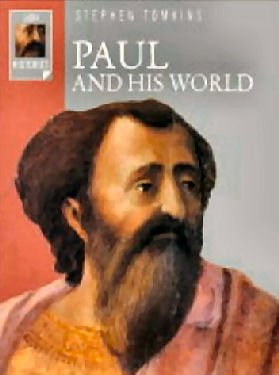
|
Posted November 4, 2008
Book: Paul and His World Author: Stephen Tomkins St. Pauls, New York. 2008. Pp. 192 An Excerpt from the Jacket:
Paul and His World is a lively and lucid attempt to portray the man behind the controversy and the drama. As the authors says, “Two billion people today are followers of Jesus and every one of them sees him through a lens crafted by Paul. A person of that influence is worth getting to know.” An Excerpt from the book: Life in Paul’s Churches What was church life like in the first century? What precisely went on in Paul’s churches? The evidence is fragmentary, so exploring it is like wandering around an unknown church in the dark, lit by a few flashes of lightning: it is intriguing but frustratingly random. Paul’s letters never offer a blueprint for church life, but deal with it on the whole only when troubleshooting is needed, so what we read depends on what problems happened to arise. We have several resources of information, rather different in their usefulness; Paul’s definitely genuine letters; his doubted letters; Acts, uncanonical early Christian writings; and early non-Christian reports. From the latter two categories, two writings are especially informative. The Christian one is the Didache or The Teaching of the Apostles, a manual for church life probably written at the end of the first century, by one of the first generation or two of church leaders after the death of the apostles. The non-Chrisitan one is a letter from Pliny, the governor of Bithyinia in Asia Minor in around AD 112 reporting to Emperor Trajan on his dealings with Christians. All of our informants agree that Christians met for worship on Sundays. Later writings call it ‘the Lord’s day’, but Paul and Acts simply call it ‘the first day of the week.’ As it was a working day, they must have met before or after work. There is no record of Christians treating Sunday as a day of rest until Emperor Constantine introduced the practice in the fourth century. Acts mentions an evening meeting in Troas — at which Paul kept going until daybreak, which of course was hardly standard. By the time Pliny wrote fifty-five years later, Christians in Bithynia had long been in the habit of meeting both before and after work, sharing supper in the evening. Sunday was chosen presumably as the day of Jesus’ resurrection, but this does not explain why Christians felt the need to move away from the Jewish sabbath. This probably happened because Paul’s generation expected to take part in synagogue worship on the sabbath, and so had to have their own meetings on another day. Thus an arrangement that was supposed to keep Christians united with mainstream Jews ended up as yet another thing separating them into two conflicting religions. It is also clear that the churches met in people’s houses. Paul mentions those of Priscilla and Aquilla of Philemon and of a woman called Nympha, for example. We should in the larger churches such as Corinth at least, probably picture something along the lines of a large house with shop front and workshops, housing slaves and servants, workers and business partners, as well as extended family. Paul could use such a place as a base for work and evangelism as well as worship. We should picture the meeting room as a small hall, rather than a lounge in a private residence with a three-piece suite and a few chairs from the dinning room. However, in Troas they met in a poorer, second-floor apartment. Table of Contents: Paul’s Worlds ‘My earlier life in Judaism’ The first church The first assault Paul versus Jesus On the road The convert Antioch Paul preaches Missionary travels Spies in Antioch Justification by faith The Jerusalem Council More troubles, more tavels An offense to Jews and foolishness to Greek Corinth Life in Paul’s churches Paul and women ‘You foolish Galatians’ Ephesus at last The Jerusalem lynch mob Rome and beyond |
|
